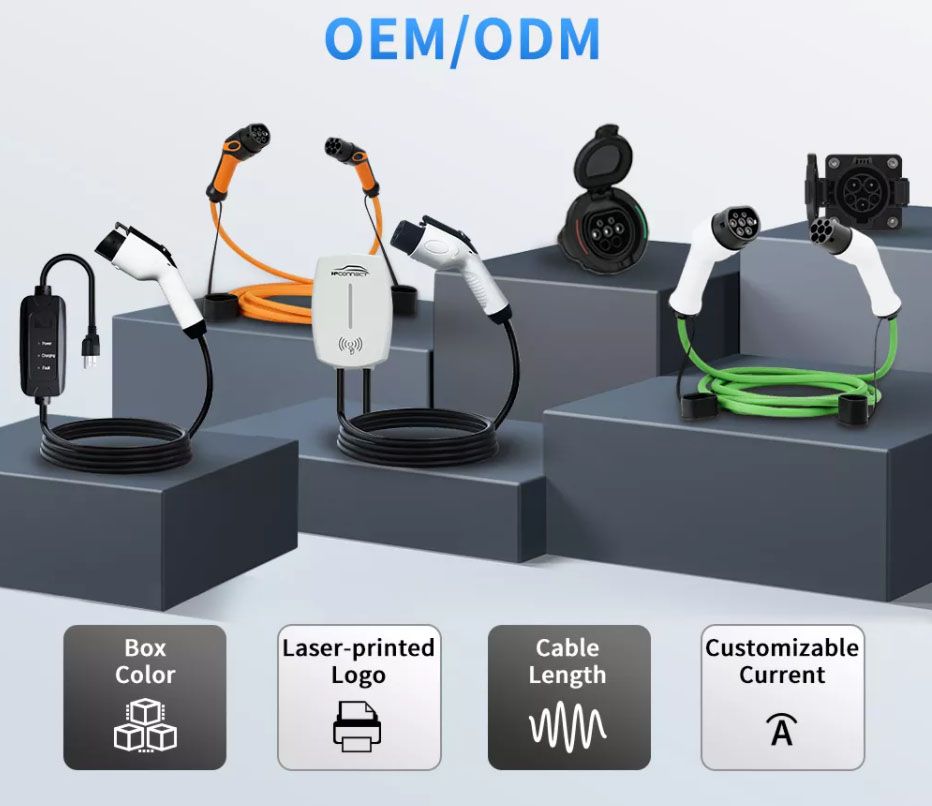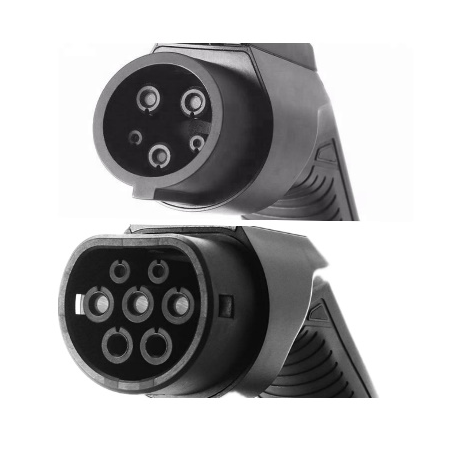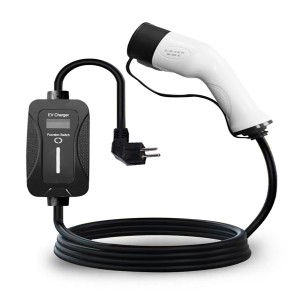7KW 32Amp Type 1/Type 2 Portable EV Charger with EU Power connector
Product Introduction
Conventional charging is to use the portable charging equipment equipped with the vehicle for charging, which can use household power supply or special charging pile power supply. The charging current is small, generally about 16-32a. The current can be DC, two-phase AC and three-phase AC. therefore, the charging time is 5-8 hours depending on the capacity of the battery pack.
Most electric vehicles use the power cord of 16A plug, together with appropriate socket and vehicle charger, so that the electric vehicle can be charged at home. It is worth noting that the general household socket is 10a, and the 16A plug is not universal. Need to use the socket of electric water heater or air conditioner. The plug on the power line indicates whether the plug is 10A or 16A. Of course, the charging equipment provided by the manufacturer can also be used.
Although the disadvantages of the conventional charging mode are very obvious and the charging time is long, its requirements for charging are not high, and the charger and installation cost are low; It can make full use of the low power period to charge and reduce the charging cost; The more important advantage is that it can deeply charge the battery, improve the battery charge and discharge efficiency and prolong the battery life.

The conventional charging mode is widely applicable and can be set up at home, public parking lot, public charging station and other places that can be parked for a long time. Due to the long charging time, it can greatly meet the vehicles operating during the day and resting at night.
Product Features
Nice shape, hand-held ergonomic design, easy to use;
Select either 5 or 10 meter length charging cable;
Select either Type 1 or Type 2 charging connector;
Different power supply connectors are available;
Protection class: IP67(in mated conditions);
Reliability of materials, environmental protection, abrasion resistance, impact resistance, oil resistance and Anti-UV.

| Input & Output | |||
| Power supply connector | Nema, CEE, Schuko, etc. | Vehicle inlet plug | type 1, type 2 |
| Input voltage/Output voltage | 100~250V AC | Max. output current | 16A/32A |
| Input frequency | 47~63Hz | Max. output power | 7.2KW |
| Protection | |||
| Over voltage protection | yes | Earth leakage protection | yes |
| Under voltage protection | yes | Over-temp protection | yes |
| Over load protection | yes | Lightning protection | yes |
| Short circuit protection | yes | ||
| Function and Accessory | |||
| Ethernet/WIFI/4G | No | LED Indicator light | Rolling |
| LCD | 1.8-inch color display | Intelligent power adjustment | yes |
| RCD | Type A | RFID | No |
| Working environment | |||
| Protection degree | IP67 | Maximum altitude | <2000m |
| Environment temperature | -30℃ ~ +50℃ | Cooling | Natural air cooling |
| Relative humidity | 0-95% non-condensing | Standby power consumption | <8W |
| Package | |||
| Dimension (W/H/D) | 408/382/80mm | Weight | 5KG |
| Certificate | CE, TUV | ||
Installation & Storage
Make sure there is a ground wire in your power supply;
For the longevity of your cables, it’s best to keep them well organized and in damp free environment while stored in your EV. We recommend using a cable storage bag to keep your cables stored safely.











